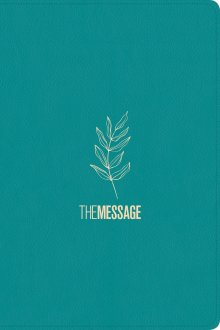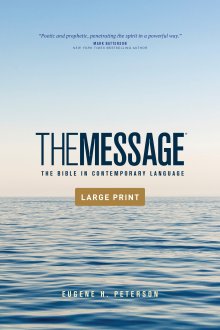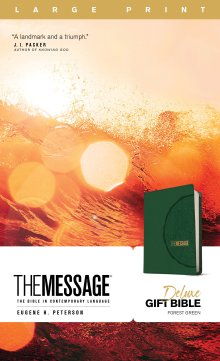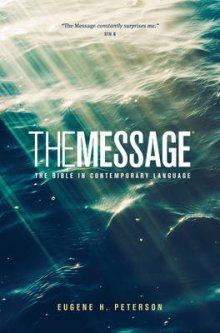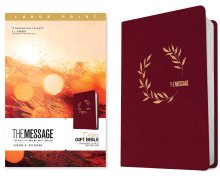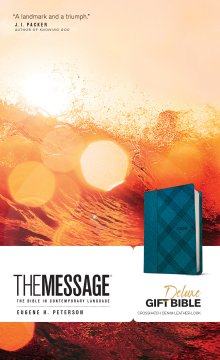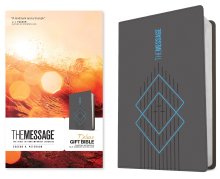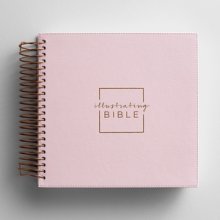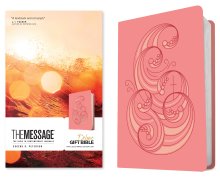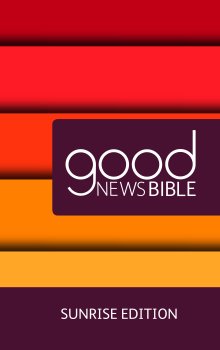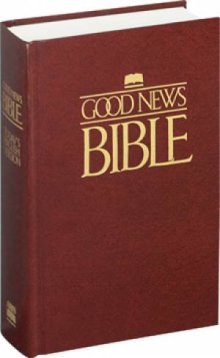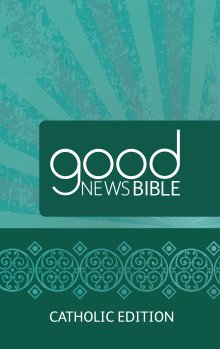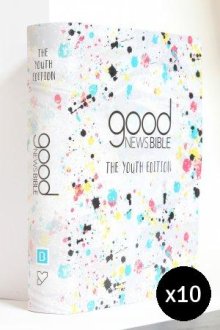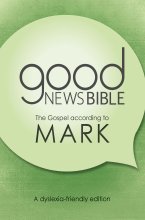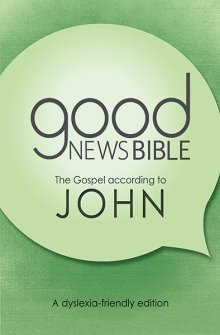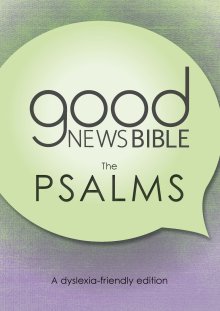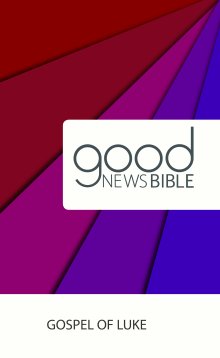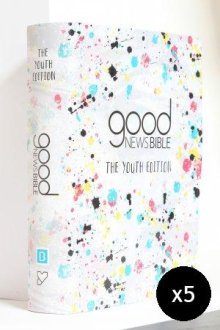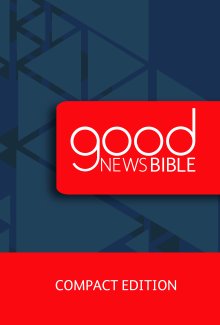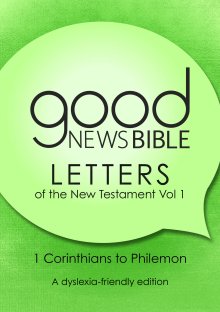The Message vs. Good News Bible: A Guide to Easy-to-Read Bibles
The Editor

If you're looking for a Bible that is clear, accessible, and easy to understand, your search has likely led you to two very popular options: The Message (MSG) and the Good News Bible (GNB). Both are famous for breaking down barriers and making Scripture accessible to everyone, but they do it in very different ways.
One is a dynamic paraphrase that speaks in the language of today, while the other is a trusted translation that focuses on simple, clear English. So, which of these easy-to-read versions is the right one for you?
This guide will compare The Message and the Good News Bible, helping you understand their unique styles so you can choose the perfect companion for your reading journey.
The main difference is that The Message is a contemporary paraphrase by Eugene Peterson that uses modern idioms for a fresh, devotional experience, while the Good News Bible is a formal "thought-for-thought" translation that uses simple, everyday English for maximum clarity.
At a Glance: Key Differences
Compare the The Message (MSG) and Good News Bible (GNB) withour quick chart:

The Message: The Bible in Today's Language
The Message (MSG) is a paraphrase by pastor and scholar Eugene Peterson. He wanted his congregation to hear the Bible in the same lively, everyday language they spoke. He re-phrased the original texts into vivid, contemporary English to help readers capture the "spirit" of the passages and hear the Bible's story in a fresh way. It is a brilliant tool for devotional reading, helping to break open familiar verses and providing a new perspective on the overarching narrative of Scripture.
You should choose The Message if:
- You already have a primary study Bible and are looking for a fresh reading companion.
- You sometimes find traditional Bible language to be a barrier.
- You want to read large portions of the Bible like a story to understand its flow.
Our Top Recommendation for The Message:
The Message Gift Edition: The Bible in Contemporary Language
Experience the Bible's story in a fresh, new way. This gift edition presents Eugene Peterson's complete paraphrase in a clear format that's perfect for reading and sharing. Shop Now
The Good News Bible: Simple, Clear, and Direct
The Good News Bible (GNB), also known as the Good News Translation (GNT), is a formal translation created by a team of scholars. Their goal was to produce a version that was exceptionally easy for everyone to understand, regardless of their background. It uses a simple, everyday vocabulary and straightforward sentence structure to communicate the meaning of the original text with clarity. The GNB is also famous for its iconic, simple line drawings by Annie Vallotton, which have helped millions of readers visualise the Bible's stories for decades.
You should choose a Good News Bible if:
- You are looking for an easy-to-read primary Bible.
- You are a new believer or are buying for a young person.
- You want a trusted translation for outreach or to give away.
Our Top Recommendation for the GNB:
Good News Bible (GNB) Sunrise Edition
This popular, affordable edition features the classic line-art illustrations and easy-to-read text that has helped millions discover God's Word. Shop Now
Making Your Choice: A Fresh Perspective vs. a Simple Translation
Choosing between these two excellent resources is about understanding their purpose.
- The Message is a wonderful reading companion to bring a fresh, contemporary perspective.
- The Good News Bible is a fantastic primary Bible for anyone who needs simplicity and clarity.
Both are powerful tools for breaking down barriers to understanding Scripture and will serve you well as you seek to connect with God's Word.
Ready to explore? Our Bible Finder tool can help you find the perfect Bible.
Latest Blogs

Discover the True Meaning of Advent with The Real Advent Calendar
As the nights draw in, the countdown to Christmas begins. For many families, an advent calendar is a cherished tradition, a daily treat that builds excitement for the big day. But in a world of corporate, secular calendars, it can be a challenge to find one that reflects the true, Christ-centred meaning of the season.

Cards
What to Write in a Christian Christmas Card
Find the perfect words for your Christmas greetings with our guide to writing in a Christian Christmas card. Discover meaningful messages, Bible verses, and inspiration to share the joy of Christ's birth.

The Ultimate Christian Christmas Gift Guide For Children
Welcome to our Ultimate Christian Christmas Gift Guide Series, where we've hand-picked the best, most inspiring presents for every child on your list

Bibles
The NKJV Bible: Is It Accurate? Your Top Questions Answered (2025)
Is the New King James Version (NKJV) accurate? How is it different from the KJV? Our simple guide answers the top questions about this popular Bible translation.

Bibles
The Good News Bible (GNB): Your Top Questions Answered (2025)
What is the Good News Bible (GNB)? Is it accurate? Our simple guide answers the top questions about this easy-to-read translation and its famous illustrations.

Bibles
The NRSV Bible: Your Top Questions Answered (2025 Guide)
Is the NRSV Bible accurate? Is it easy to read? Our simple guide answers the top questions about the New Revised Standard Version, the standard for scholars.

